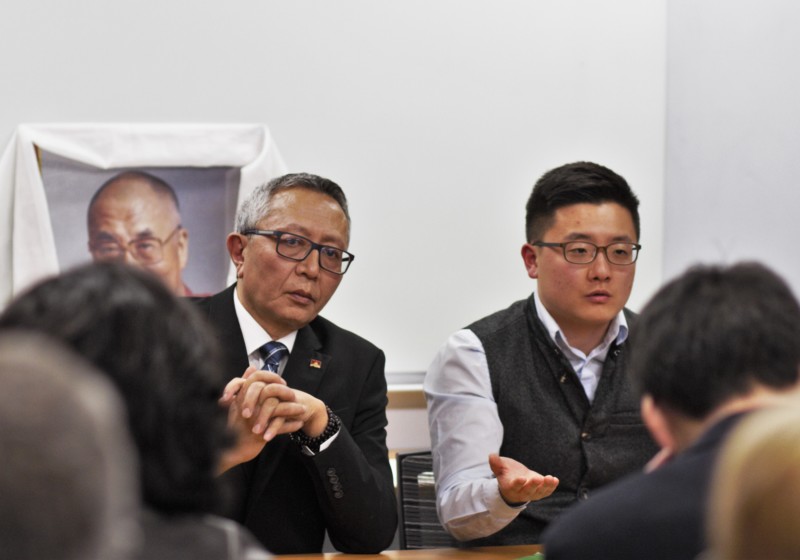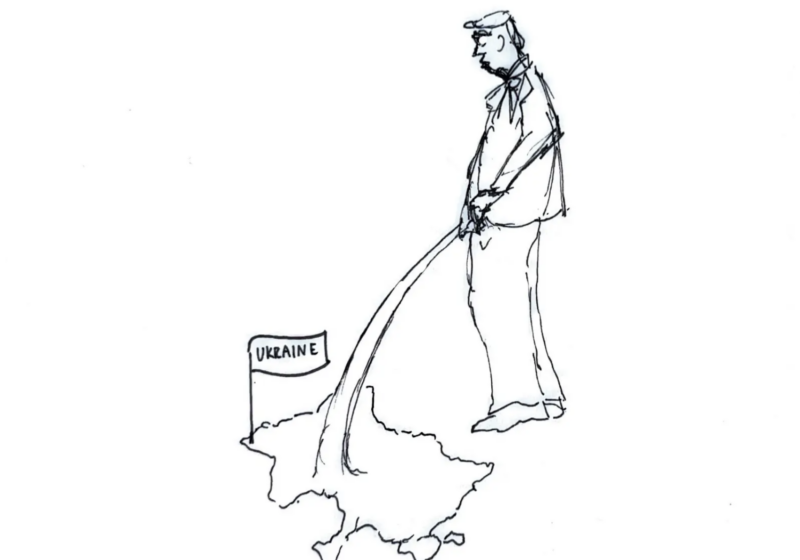Kunga Tashi, the Chinese liaison officer in the Office of Tibet in Washington, D.C., discussed in his talk this past Saturday how people with different opinions about contemporary issues can co-exist and resolve them through peaceful means.
The event occurred on the fourth floor of Douglass and was organized by Warner School student Se Hoon Kim.
“Since the Tibetan issue emphasizes mainly on the idea of nonviolence and human-to-human dialogue, I thought it was the perfect example to use to promote the idea of dialogue to the school community,” Kim told the Campus Times. “As scholars, we all have the responsibility to academically engage the world issue with the goal of promoting peace and non-violence.”
Attendees of the event were thoroughly engaged and asked questions regarding the Tibetan Issue.
Tashi said the Tibetan issue currently involves the Chinese and Tibetan communities going in different directions and that it is vital to bridge the gap between the two. He explained the key to bringing the two communities together are the Dalai Lama’s three guiding commitments in life — promoting human values, achieving religious harmony, and preserving Tibetan cultural integrity.
According to Dalai Lama, his three commitments can be achieved by going down the “chosen path of freedom,” which is nonviolence
Tashi further spoke of the Dalai Lama’s determination to take the “middle way” approach of solving the Tibet problem and further vouched for “meaningful autonomy.”
According to Tashi, the Dalai Lama wants Tibet to remain part of China, but only if it is guaranteed meaningful autonomy. However, according to Tashi, the only realistic way to get meaningful autonomy is to search for a solution in the Chinese constitution.
According to Tashi, meaningful autonomy means Tibet would be allowed to carry out independent activities related to the preservation of culture and the promotion of their language.
“Over the years, ideologies like these have made me change my outlook on the whole issue,” said student Tenzin Wangmo, who helped translate the event from Tibetan to English for the audience. “From being someone who wanted complete independence for Tibet, I have realized that the middle way is the right approach to this issue.”
Tashi emphasized how essential it is to recognize that there is a problem in Tibet before contemplating over its solution.
As far as the solution of the Tibetan issue is concerned, he believes that the responsibility rests on the shoulders of the youth, as the future People’s Republic of China belongs to the young Chinese and not the political leaders. It is in their power to mobilize the movement and take the “middle way.”
Attendees were excited to put forth their questions and get answers from the Chinese liaison officer.
There were questions regarding the practical aspects of the peaceful ideology, to which he responded by saying violence in the past is no indication of violence in the future and that dialogue and cooperation are the keys to a successful and peaceful resolution.
“I think this event was extremely successful because almost every student was well engaged with the topics discussed,” Kim said. “I also feel very proud that the organizers, speaker, and the audience were able to communicate in English and Mandarin, with introduction of the Tibetan language, because it truly represented the diversity of UR and the amazing students and faculty it has within its community.”
Correction (4/3/18): The original version of this article referred to the People’s Republic of China as the Republic of China, as well as referring to Tashi as the representative of the Dalai Lama when he is in fact the Chinese liaison officer.





